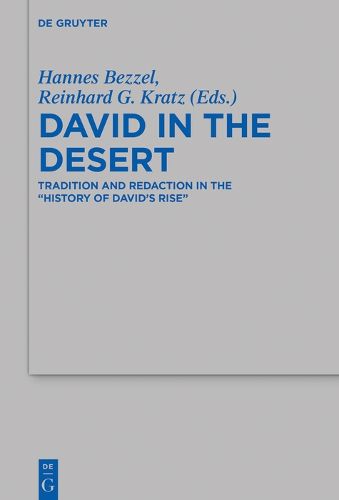Readings Newsletter
Become a Readings Member to make your shopping experience even easier.
Sign in or sign up for free!
You’re not far away from qualifying for FREE standard shipping within Australia
You’ve qualified for FREE standard shipping within Australia
The cart is loading…






This title is printed to order. This book may have been self-published. If so, we cannot guarantee the quality of the content. In the main most books will have gone through the editing process however some may not. We therefore suggest that you be aware of this before ordering this book. If in doubt check either the author or publisher’s details as we are unable to accept any returns unless they are faulty. Please contact us if you have any questions.
In the course of the last two decades, both the historical reconstruction of the Iron I-Iron IIA period in Israel and Judah and the literary-historical reconstruction of the Books of Samuel have undergone major changes. With respect to the quest for the "historical David", terms like "empire" or "Grossreich" have been set aside in favor of designations like "mercenary" or "hapiru leader", corresponding to the image of the son of Jesse presented in I Sam. At the same time, the literary-historical classification of these chapters has itself become a matter of considerable discussion. As Leonhard Rost's theory of a source containing a "History of David's Rise" continues to lose support, it becomes necessary to pose the question once again: Are we dealing with a once independent 'story of David' embracing both the HDR and the "succession narrative" are there several independent versions of an HDR to be detected, or do I Sam 16-II Sam 5* constitute a redactional bridge between older traditions about Saul on the one hand and David on the other? In either case, what parts of the material in I Sam 16-II Sam 5 are based on ancient traditions, and may therefore serve as a source for any tentative historical reconstruction? The participants in the 2018 symposium at Jena whose essays are collected in this volume engage these questions from different redaction-critical and archaeological perspectives. Together, they provide an overview of contemporary historical research on the book of First Samuel.
$9.00 standard shipping within Australia
FREE standard shipping within Australia for orders over $100.00
Express & International shipping calculated at checkout
This title is printed to order. This book may have been self-published. If so, we cannot guarantee the quality of the content. In the main most books will have gone through the editing process however some may not. We therefore suggest that you be aware of this before ordering this book. If in doubt check either the author or publisher’s details as we are unable to accept any returns unless they are faulty. Please contact us if you have any questions.
In the course of the last two decades, both the historical reconstruction of the Iron I-Iron IIA period in Israel and Judah and the literary-historical reconstruction of the Books of Samuel have undergone major changes. With respect to the quest for the "historical David", terms like "empire" or "Grossreich" have been set aside in favor of designations like "mercenary" or "hapiru leader", corresponding to the image of the son of Jesse presented in I Sam. At the same time, the literary-historical classification of these chapters has itself become a matter of considerable discussion. As Leonhard Rost's theory of a source containing a "History of David's Rise" continues to lose support, it becomes necessary to pose the question once again: Are we dealing with a once independent 'story of David' embracing both the HDR and the "succession narrative" are there several independent versions of an HDR to be detected, or do I Sam 16-II Sam 5* constitute a redactional bridge between older traditions about Saul on the one hand and David on the other? In either case, what parts of the material in I Sam 16-II Sam 5 are based on ancient traditions, and may therefore serve as a source for any tentative historical reconstruction? The participants in the 2018 symposium at Jena whose essays are collected in this volume engage these questions from different redaction-critical and archaeological perspectives. Together, they provide an overview of contemporary historical research on the book of First Samuel.